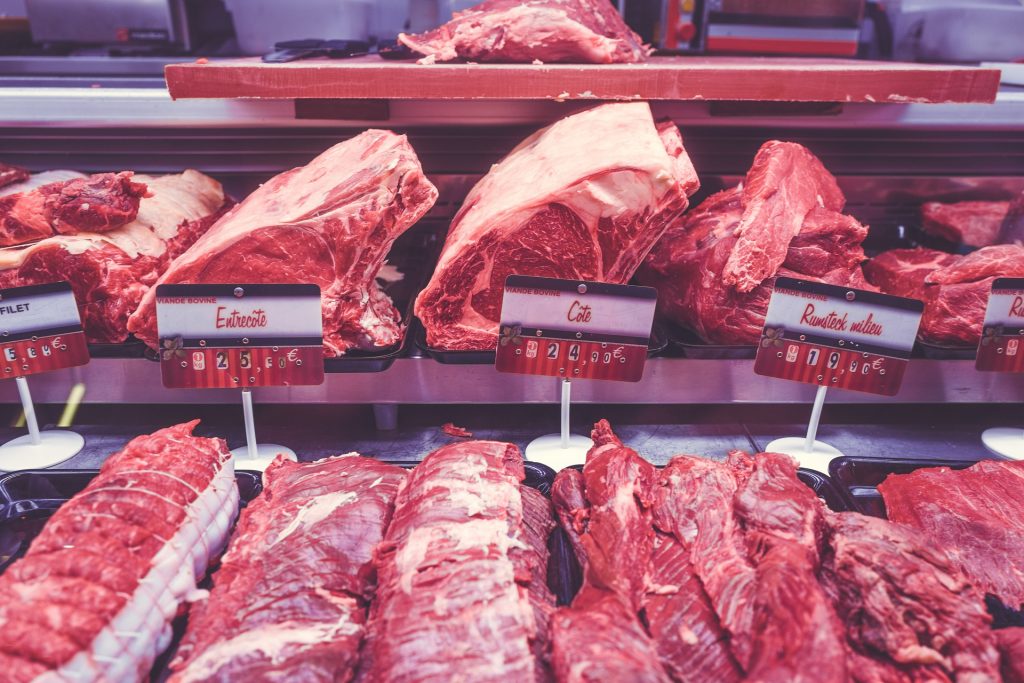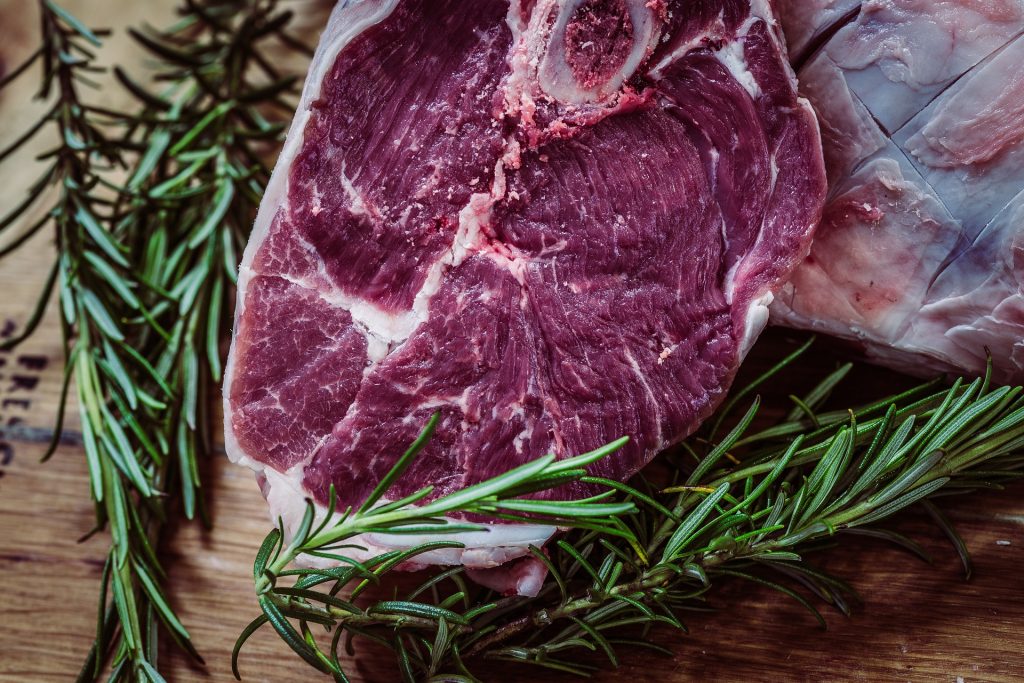How to Store Meat – Best Way to Store Meat
What is meat
The meat consists of muscle, fat, connective and bone tissues. To assess the quality characteristics, it is customary to classify a product into the following categories:
- species origin: pork, beef, veal, lamb, etc.;
- heat treatment: steamed, chilled, frozen;
- pre-sale preparation: packaged, weighted, semi-finished products (meat pieces of various sizes – pickled or fresh), minced meat, billets for chops and barbecue).
The shelf life of meat depends on the type of product, it’s primary processing, and quality.
How to determine the freshness of meat

Before it goes on sale, the product is carefully checked for compliance with legislatively established norms and standards by regulatory authorities. The carcass of the animal is cut in a meat factory in accordance with all the rules, after which it is thoroughly washed and cleaned.
Then, veterinary and sanitary control is carried out, as a result of which the meat is either allowed for sale – then a stamp is put on it of a certain pattern, or it is rejected. The final stage of the pre-sale preparation of the product is to obtain a certificate of quality.
Smell
The aroma coming from a fresh product should not be repulsive. It should be fresh and natural, without any additional impurities and shades. If the piece has a beautiful appearance, but its aroma is unpleasant, then it is better to refuse such a purchase.
Color
It varies by species:
- the pork pulp has a pink-red color, has a delicate structure with insignificant interspersed veins (marble pattern);
- high-quality beef is red, the fat layer is light, clear. If the meat is “stale”, then the cut will be dark red, almost brown;
- milk veal has a bright pink color with a splash of fat;
- lamb is appreciated for its nutritional value and naturalness. Fresh meat has a light red hue and is generously “stuffed” with white fat.
Consistency
The freshness of the product can be checked by pressing on it with a special fork, which is available for each seller. If the meat has just gone on sale, then the integrity of the surface will quickly recover, but if it has been stored for a long time, the dent will remain for longer. In addition, the piece may seem “dry” in appearance, but if cut, a clear liquid will flow from the cut of the fresh product.
If the meat is bought at the supermarket, then you need to pay attention to the contents of the package. When a piece is beautifully decorated in a plastic box, and drips are visible at the bottom of the pallet, such a product is stale. Non-compliance with the storage regime is evidenced by pink ice crystals surrounding the frozen meat piece. Never buy or use a product with a grayish tint. The pink color of fat can even be a consequence of the “soaking” of meat in a manganese solution to give it a marketable appearance if the expiration date has expired.
The best ways to preserve the nutritional value of meat products are cooling and freezing. But these technological processes are associated with the need to comply with certain rules and regulations, ignoring which will lead to damage to the product and reducing its quality.
The shelf life of raw meat in the refrigerator

For a fresh product to not deteriorate, retain its juiciness and high quality, you need to know how to properly store meat in the refrigerator:
- it should not be stored in a plastic bag;
- the purchased piece of pork or beef needs to be transferred to glass, enameled or plastic containers;
- it is not recommended to close the container lid tightly; it will be enough just to cover the container with a paper or waffle towel;
- place it on the lower shelf or as close as possible to the freezer compartment.
The meat, if cooled, can retain excellent taste and nutritional qualities for some time.
A whole meat product is stored longer if chopped into small pieces. Isolating meat from other food products helps to extend its shelf life.
Storage of chilled product
Type At a temperature of 0 to +4 ˚С At a temperature of 0 to -2 ˚С
Pork about 24 hours no more than 12 days
Beef no more than 48 hours within 16 days
Lamb about 24 hours no more than 12 days
To extend the shelf life, it is recommended to freeze or pickle the product.
You can store pickled meat in the refrigerator for:
- 3-4 days if mayonnaise was used as the basis for the marinade;
- 5-7 days when a pickled piece was generously sprinkled with black or red pepper;
- 4–5 days if the meat is poured with natural table wine or vinegar.
A salty piece retains its properties longer, since salt, being a preservative, slows down the process of decomposition of meat.
Poultry meat also has its own shelf life, and it deserves a separate discussion.
Shelf life of frozen meat
Of course, it is better to immediately process the meat, having prepared a tasty and satisfying dish. But it can be stored in the freezer, too.
In order for the product to retain its beneficial properties, you need to know how to freeze meat properly:
- it is not recommended to wash it, otherwise, it will deteriorate faster;
- large pieces are stored longer, but for convenience, you can divide the pulp into portions;
- each piece should be thoroughly wiped with a paper towel or napkins;
- put portions for freezing in plastic bags, having previously released air from them;
- lay in layers in the freezer.
There are standards for how long meat can be stored in the freezer, depending on the temperature and type of meat product:
Type of meat T -12 ˚С T -18 ˚С T -20 ˚С T -25 ˚C
Beef, months 8 12 14 18
Pork, months 3 6 7 12
Lamb, months 6 10 11 12
If it is impossible to find fresh meat, then you can buy a frozen product. At the same time, the product subjected to shock freezing has the best nutritional properties.
It is necessary to defrost a product gradually – this will preserve the juiciness and good taste.
There are several ways to defrost meat:
- A piece in a vacuum package is transferred from the freezer to the refrigerator. Within a day it thaws. At the same time, a large amount of blood should not be released from the pulp – this indicates that the product was improperly frozen;
- A piece in the package is placed in a deep container (bowl) filled with cold water regularly cooling the liquid. It thaws within a few hours, preserving all the vitamins and beneficial elements. If the meat was not frozen in a vacuum package, then the piece must be carefully wrapped in cling film (several layers) and thawed in water;
- A piece is left to thaw at room temperature. This will not take much time (about 4–5 hours), however, bacteria can become active in the liquid released from the meat during thawing (if the meat was of poor quality), so consider this when deciding on what method to use.
You can store thawed meat in the refrigerator for 2 days, you can not re-freeze meat, as this not only impairs the taste but also destructively affects the nutritional value.
Is it possible to boil frozen meat? No, as this will lead to the destruction of all vitamins and nutrients contained in the product.
Knowing the shelf life of beef, pork and lamb will always help your family and friends to enjoy quality products.
